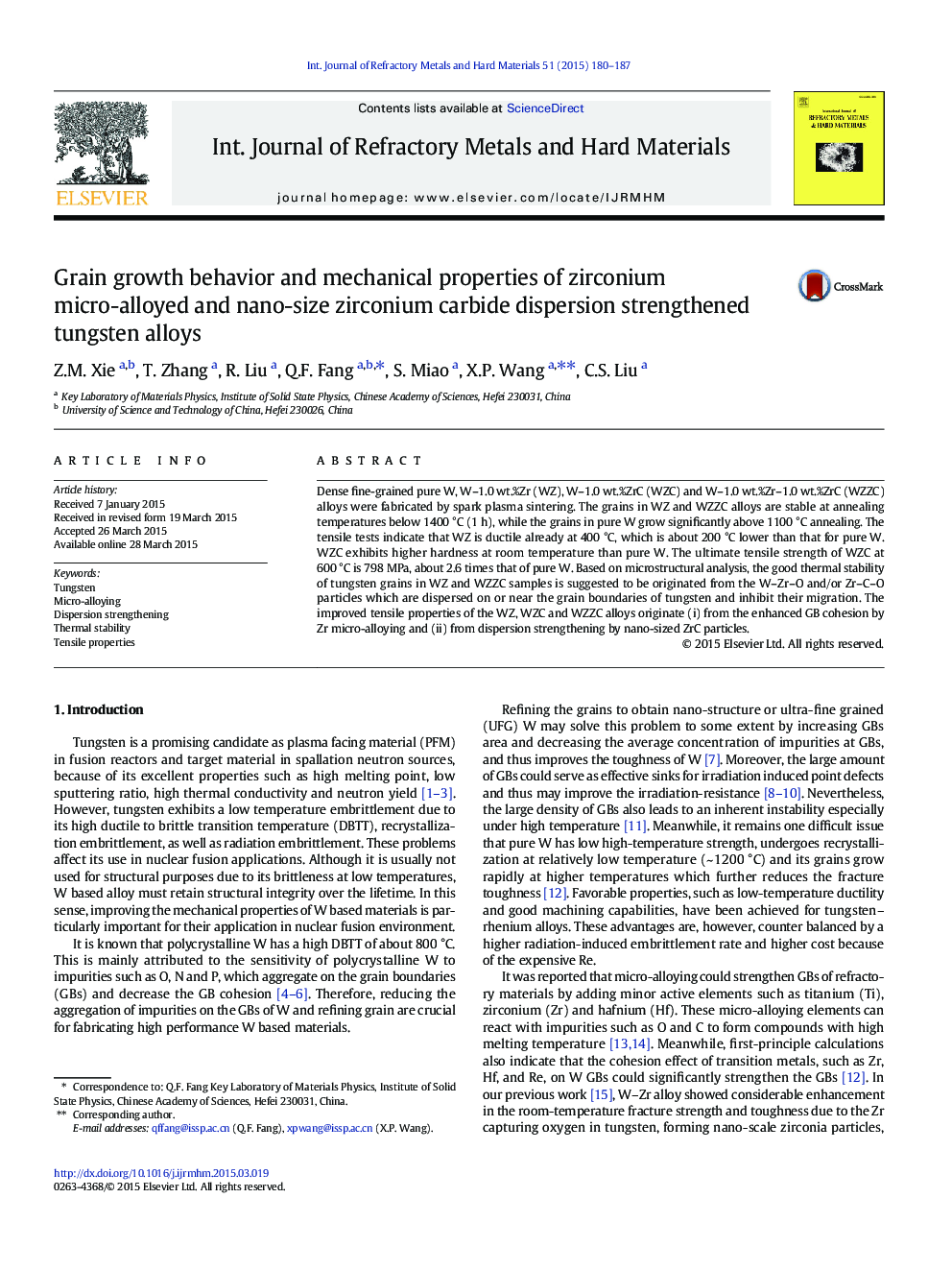| Article ID | Journal | Published Year | Pages | File Type |
|---|---|---|---|---|
| 1602952 | International Journal of Refractory Metals and Hard Materials | 2015 | 8 Pages |
•W alloys were fabricated from Zr and ZrC addition.•Grain growth in WZ and WZZC starts after 1400 °C (1 h) annealing.•WZ alloys become ductile at 400 °C, 200 °C lower than pure W.•The elongation of WZ at 700 °C is 20%, 2 times that of pure W.•The UTS of WZC is up to 798 MPa at 600 °C, 2.6 times that of pure W.
Dense fine-grained pure W, W–1.0 wt.%Zr (WZ), W–1.0 wt.%ZrC (WZC) and W–1.0 wt.%Zr–1.0 wt.%ZrC (WZZC) alloys were fabricated by spark plasma sintering. The grains in WZ and WZZC alloys are stable at annealing temperatures below 1400 °C (1 h), while the grains in pure W grow significantly above 1100 °C annealing. The tensile tests indicate that WZ is ductile already at 400 °C, which is about 200 °C lower than that for pure W. WZC exhibits higher hardness at room temperature than pure W. The ultimate tensile strength of WZC at 600 °C is 798 MPa, about 2.6 times that of pure W. Based on microstructural analysis, the good thermal stability of tungsten grains in WZ and WZZC samples is suggested to be originated from the W–Zr–O and/or Zr–C–O particles which are dispersed on or near the grain boundaries of tungsten and inhibit their migration. The improved tensile properties of the WZ, WZC and WZZC alloys originate (i) from the enhanced GB cohesion by Zr micro-alloying and (ii) from dispersion strengthening by nano-sized ZrC particles.
